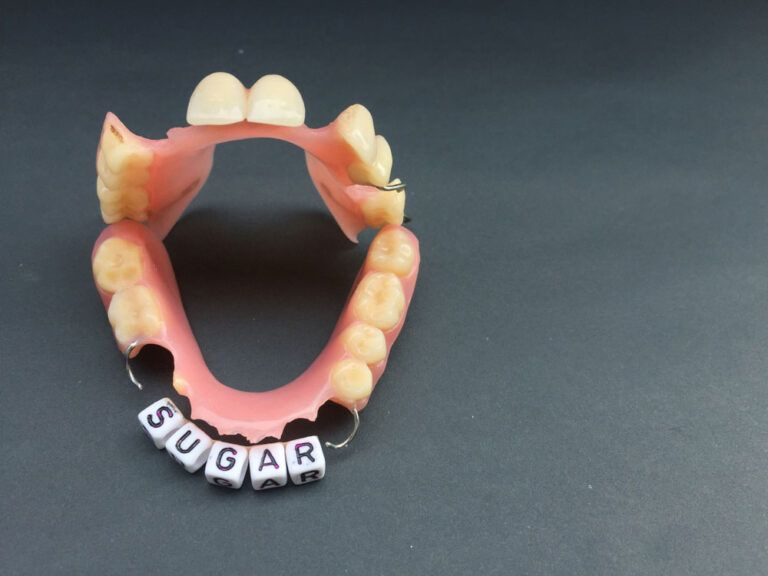Diabetes and Gum Disease: What You Need to Know

Diabetes is a chronic condition that affects millions of people worldwide. While managing blood sugar levels is the primary concern for individuals with diabetes, oral health is also significantly impacted. One of the most common oral health issues for diabetics is gum disease. At Sunset Dental Group in Santa Ana, CA, Drs. Amanda and Jerry Kronquist emphasize the importance of understanding the link between diabetes and gum disease and how individuals can take proactive steps to protect their oral health.
The Link Between Diabetes and Gum Disease
Diabetes and gum disease have a strong connection, with diabetes increasing the risk of developing gum infections. When blood sugar levels are poorly controlled, the body’s ability to fight infection weakens, making it easier for bacteria to build up in the mouth. This bacterial buildup can lead to plaque, which can irritate the gums and lead to gum disease, also known as periodontal disease.
People with diabetes are also more likely to experience dry mouth, a condition that reduces the amount of saliva in the mouth. Saliva is essential for washing away food particles and neutralizing acids, and a lack of it can make the gums more susceptible to infection. Additionally, high blood sugar levels create an environment in the mouth that encourages bacterial growth, further contributing to gum disease development.
How Gum Disease Affects Diabetes
Just as diabetes increases the risk of gum disease, gum disease can also negatively affect diabetes management. The inflammation caused by gum disease can make it more difficult to control blood sugar levels, leading to potential complications. When the body is dealing with infection, it may produce higher levels of inflammatory markers, which can interfere with insulin resistance and blood sugar regulation.
Research suggests that individuals with gum disease may have more difficulty controlling their diabetes, and their condition may worsen over time. By maintaining good oral health and addressing gum disease early, people with diabetes can better manage their blood sugar levels and reduce the risk of complications associated with both conditions.
Signs and Symptoms of Gum Disease in Diabetics
Gum disease can develop gradually, often without noticeable symptoms at first. However, when left untreated, it can progress and lead to serious complications. For individuals with diabetes, it’s important to be aware of the signs and symptoms of gum disease, which include:
- Red, swollen, or bleeding gums
- Bad breath or a bad taste in the mouth
- Receding gums
- Loose or shifting teeth
- Pain or discomfort when chewing
If you notice any of these symptoms, it’s crucial to see your dentist as soon as possible. Early detection and treatment can help prevent the progression of gum disease and avoid more severe oral health issues.
Preventing Gum Disease with Diabetes
Preventing gum disease is essential for individuals with diabetes, as it helps to protect both oral and overall health. The following tips can help manage blood sugar levels and maintain healthy gums:
- Control blood sugar levels: Keeping blood sugar levels within the recommended range is the most important step in preventing gum disease. This can be achieved through proper diet, exercise, and following your doctor’s instructions for medication management.
- Practice good oral hygiene: Brushing your teeth twice a day with fluoride toothpaste and flossing daily helps remove plaque buildup, which can lead to gum disease. It’s also important to use an antimicrobial mouthwash to help kill bacteria.
- Regular dental checkups: Visit your dentist regularly for professional cleanings and checkups. Regular visits allow your dentist to catch any early signs of gum disease before they progress.
- Stay hydrated: Drink plenty of water to help prevent dry mouth and encourage saliva production. Saliva is essential for maintaining a healthy mouth and neutralizing harmful bacteria.
Treating Gum Disease in Diabetics
If gum disease is diagnosed, treatment options may vary depending on the severity of the condition. For individuals with diabetes, it’s essential to work closely with both your dentist and healthcare provider to manage treatment. The following are common treatment options for gum disease:
- Deep cleaning (scaling and root planing): A deep cleaning removes plaque and tartar from below the gum line and smooths the roots of the teeth to help the gums reattach.
- Antibiotic therapy: In some cases, antibiotics may be prescribed to help control infection and reduce inflammation in the gums.
- Surgical procedures: For advanced gum disease, surgical treatments such as flap surgery or bone grafts may be necessary to restore gum tissue and bone lost due to infection.
The Importance of Managing Both Diabetes and Gum Disease
The key to maintaining good oral health as a diabetic is to manage both your blood sugar levels and your gum health. By controlling blood sugar and practicing proper oral hygiene, you can prevent or reduce the severity of gum disease. Regular checkups with your dentist are also essential for early detection and treatment of any oral health issues. Drs. Amanda and Jerry Kronquist at Sunset Dental Group in Santa Ana, CA, emphasize that addressing gum disease early can help improve overall health and make it easier to manage diabetes.
Sources:
- Seymour, R. A., & Thomason, J. M. (2016). Diabetes and periodontal disease. Periodontology 2000, 71(1), 148-158.
- Chapple, I. L. C., & Genco, R. (2013). Diabetes and periodontal diseases: Consensus report of the Joint EFP/AAP Workshop on Periodontitis and Systemic Diseases. Journal of Periodontology, 84(4), S1-S14.
- Lalla, E., & Papapanou, P. N. (2011). Diabetes mellitus and periodontitis: A tale of two common interrelated diseases. Journal of Clinical Periodontology, 38(6), 509-519.

Recent Comments